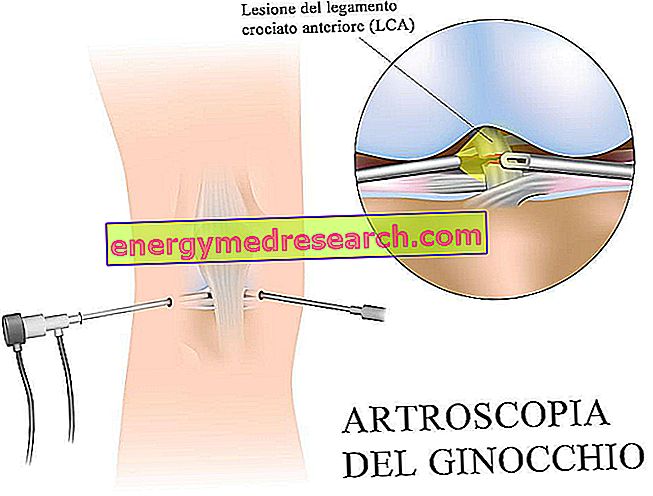Related articles: Pheochromocytoma
Definition
Pheochromocytoma is a catecholamine-secreting tumor that develops from the chromaffin cells, typically located in the adrenal glands. The main secreted catecholamines include, in different proportions, noradrenaline, adrenaline and dopamine, which determine different physiological effects depending on the stimulated peripheral receptor.
About 90% of pheochromocytomas are located at the level of the adrenal medullary, but may originate from any chromaffin cell nucleus deriving from the neuroectoderm; these nuclei are present in other parts of the body (carotid glomus, paraganglia associated with the sympathetic nervous system, abdominal aortic bifurcation, posterior mediastinal ganglia, etc.).
Pheochromocytoma is often sporadic, however there are some genetic disorders that favor its onset (eg MEN 2A and 2B). The tumor can also develop in patients with type 1 neurofibromatosis (von Recklinghausen disease) and can be associated with renal carcinoma, as in von Hippel-Lindau disease.
Pheochromocytomas located in the medullary of the adrenal gland equally affect both sexes and can occur at any age, although the peak incidence is between 20 and 50 years.
Pheochromocytoma is a generally benign tumor with variable dimensions (the average size of the neoplastic mass varies between 5 and 6 cm in diameter). In about 10% of cases it is, instead, malignant; this evolution is more frequent in extra-adrenal tumors, in familial ones and in the female sex.
Most common symptoms and signs *
- Arrhythmia
- Retrosternal burning
- palpitations
- Dyspnoea
- Glycosuria
- insulin Resistance
- Hyperglycemia
- Hyperhidrosis
- hyperreflexia
- Hypertension
- Orthostatic hypotension
- Livedo Reticularis
- Stomach ache
- Headache
- marasma
- Nausea
- Pallor
- Paresthesia
- Weight loss
- Constipation
- Strie rubre
- Cold sweating
- Tachycardia
- tachypnoea
- Tremors
- Dizziness
- Blurred vision
- He retched
Further indications
The clinical manifestations are mainly due to the type of secretion and the quantity of catecholamines produced.
The predominant sign of the pheochromocitroma is arterial hypertension, which can be stable on high values or appear in an episodic (paroxysmal) way. Paroxysmal attacks can be caused by palpation of the tumor, changes in position, abdominal compression and emotional trauma.
The hypertension associated with pheochromocitroma is resistant to common anti-hypertensive drugs and is frequently accompanied by cardiovascular manifestations, such as tachycardia, severe headache, cold sweat and pallor.
Symptoms include orthostatic hypotension, dizziness, blurred vision, tachypnea, palpitations, nausea, vomiting, epigastralgia, dyspnea, paresthesia and constipation. In addition, pheochromocytoma can result in increased insulin resistance, diabetes mellitus and cardiac arrhythmias.
The diagnosis of pheochromocytoma is based on the demonstration of increased catecholamine production. This can be achieved with the blood and urinary dosage of catecholamines and their metabolites. Physical examination, except for the relief of hypertension, is usually normal. Imaging techniques, especially computed tomography and magnetic resonance imaging, help locate the tumor.
The treatment of pheochromocytoma consists, where possible, in the removal of the neoplastic mass. However, surgery must be preceded by drug therapy aimed at stabilizing the cardiovascular condition of the patient.



